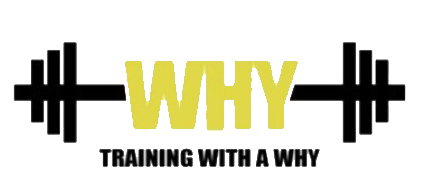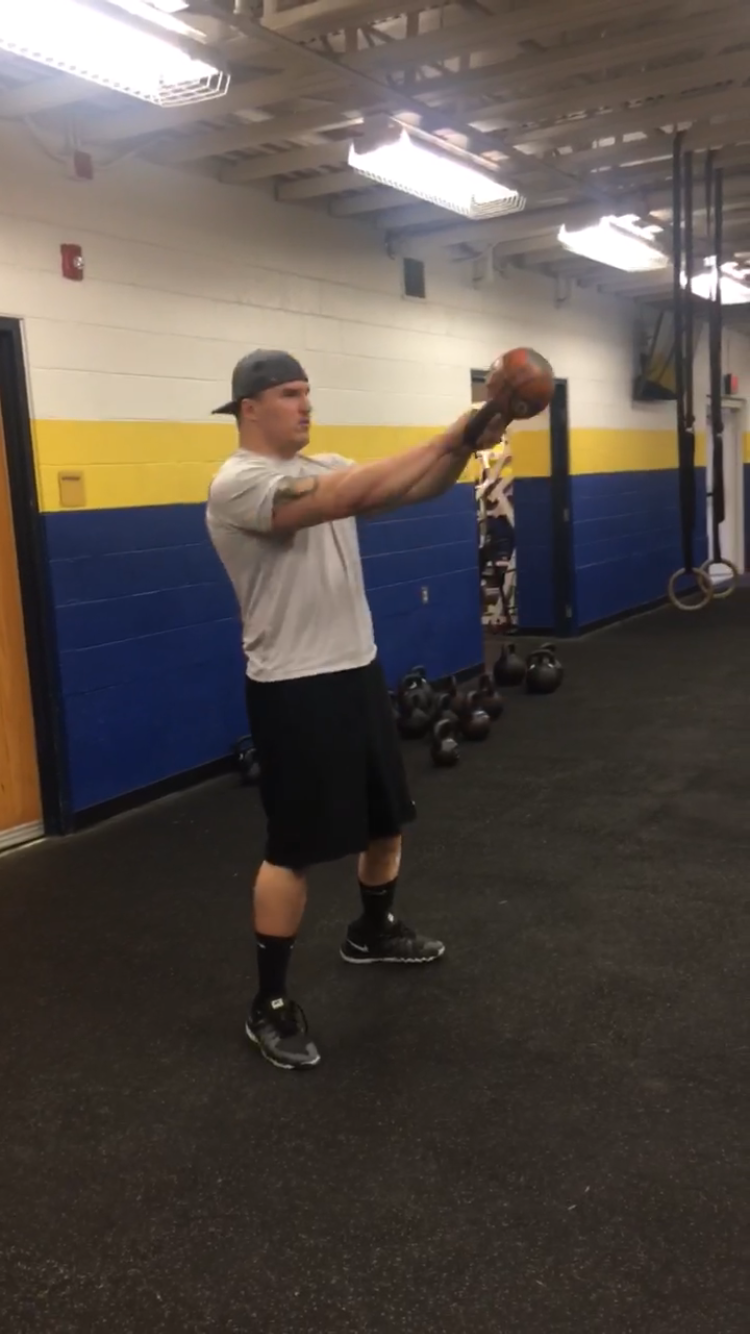One of my favorite kettlebell exercises is the kettlebell swing, and thanks in part to CrossFit, it is one of the most well-known uses of the kettlebell. As a trainer, there have been many occasions where a client has told me that they have done swings in the past. I always ask to do a few swings and let me observe their technique. After several swings I find myself cringing and stopping them before I watch them injure themselves. Most people do not realize the technique involved with the swing and end up tweaking their lower back. It should be no surprise that swinging a weight in the shape of a ball fast between your legs can lead to discomfort if done wrong. Fortunately for you, I’ve become efficient at teaching the swing using these three steps below.
Step 1: The Hike Pass
- Place the bell a foot or so in front of you.
- Your feet should be in your power stance. The same or similar stance to the deadlift stance.
- Hinge down to the bell by pushing your hips back. Being sure not to lock your knees.
- Ensure that your back is flat and tight when you push your hips back.
- Grab the bell with both hands and tilt the bell towards you.
- Hike the bell high and tight between your legs letting the bell go through your legs and not stopping at your groin.
- Return the bell to the starting position on the ground.
- Repeat the hike pass until you feel comfortable. (I usually have clients do a set of 5-8)
Tips:
- Hiking the bell high and tight is a major key in the swing. You want to hike it right at your groin.
- The bell going to low through your legs will make the swing feel awkward and will put major strain on your lower back.
- Make sure the bell goes through your legs and doesn’t stop at your groin. So if someone was watching you from the side they would be able to see the bell behind you at the top of the hike pass.
Video Here: Hike Pass
Step 2: Feeling the Weight Shift
- Repeat the hike pass but do not return the bell to the starting position.
- Instead, let the bell float out in front of you and swing back in between your legs as in the hike pass.
- Be sure not to raise your chest or try to stand upwards.
- Let the bell swing back and forth being sure it is going high and tight between your legs every rep.
- As the bell swings back and forth notice your weight sift from front to back. Do not fight this feeling.
- As the bell goes back between your legs your weight should shift to the mid/front of your feet. As the bell swings forward out in front of you your weight should shift to the mid/back of your feet.
- Your back should remain flat and tight as the bell swings back and forth and again be sure not to raise your chest or try to stand up.
- Repeat until comfortable. (Again, I usually have clients do 5-8 reps)
Video Here: Weight Shift
Step 3: The Full Swing
- Repeat the hike pass.
- As you hike the bell feel your weight shift in your feet.
- As the bell comes forward thrust your hips forward and stand upright.
- At the top of the swing you should be completely upright.
- Be sure not to arch your lower back.
- Squeeze your glutes at the top of the swing.
- At the top of the swing the bell should be right at eye level.
- Let the bell float back down between your legs high and tight.
- Repeat (Except for the hike pass) for the prescribed number of repetitions.
Tips:
- Thrust your hips forward by driving through your heels.
- You should never feel like you are on your toes as the bell is coming upwards.
- You should be able to see over the bell at the top of the swing.
- Your eyes should follow the bell throughout the entire swing. Do not try to look upwards or forward and do not try to keep a “big chest” as the bell is coming back down between your legs. (This is a very common mistake)
- Do not “baby” your hip thrust to get the bell going upwards. It should be a quick, powerful movement.
- If your shoulders are getting tired throughout the swings you are using your arms to swing the bell instead of using your hips. Treat your arms as only ropes hanging onto the bell.
Video Here: KB Swing
Benefits
- Great for developing power from the hinge position.
- Once soreness disappears from the first few times trying this exercise you will see improved flexibility in your hamstrings.
- Can be done for many repetitions and used as a fun way to get your heart rate up (Trust me, do 25 of these consecutively and you will have to catch your breath afterwards)
- Activation of your glutes and hamstrings.
Try it Out
Have some fun implementing the kettlebell swing into your training program. Include it in different parts of your workout and see when it best fits you and your goals. Once you are efficient at the swing try all different kinds of weights to get a different feeling each time.
As always, thanks for reading and please support the site by subscribing with your email and stay up to date on future articles.


